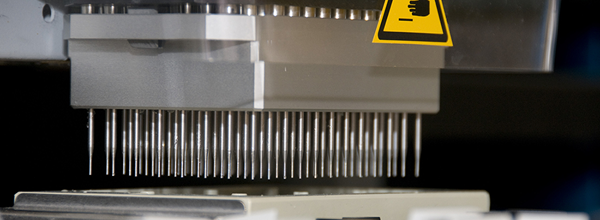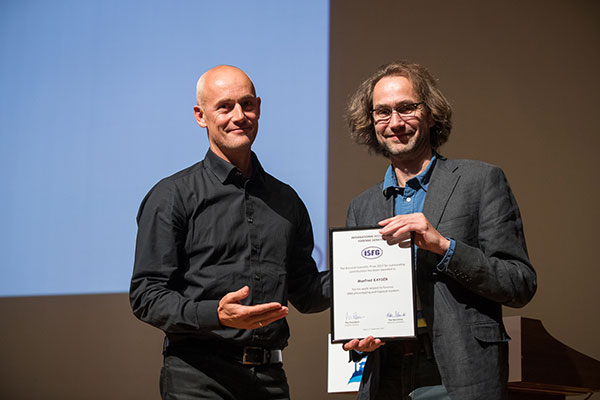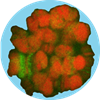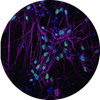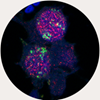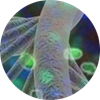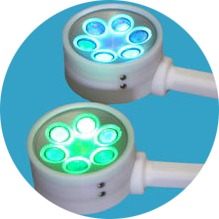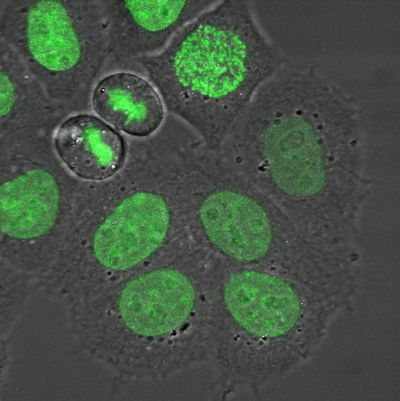About our Department
Our research
Using genetic identification as the key principle, our mission is to perform innovative scientific research and technological developments in a wide range of societally relevant areas such as in forensics, evolution, epidemiology, and in other medically relevant fields.
To accomplish our mission, we perform fundamental and applied research on several topics of scientific and societal relevance, provide academic teaching to several graduate and postgraduate schools at Erasmus MC and elsewhere, provide specialized forensic DNA service to law enforcement agencies in several countries, and are widely engaged in the public dissemination of science.
History
The Department’s history started in December 2002 when the Dean of Erasmus MC and the Director General of the Netherlands Forensic Institute (NFI) signed a 5-year collaboration agreement on human genome research aiming to improve forensic analysis, which led to the co-founding and co-funding of the Department of Forensic Molecular Biology at Erasmus MC. In 2004, Dr. Manfred Kayser was appointment as Professor of Forensic Molecular Biology and Head of this newly founded department to build it up. After positive external evaluation by an expert committee led by Professor Sir Alec Jeffreys , Erasmus MC and NFI signed a second 5-years collaboration contract. Per 2013, the NFI unilaterally decided to discontinue the collaboration and funding. In 2015, the Board of Directors of Erasmus MC changed the name into Department of Genetic Identification to facilitate broadening of the research mission.
Funding
Research at the Department is/was funded by Erasmus MC, the Netherlands Organization for Scientific Research, the Netherlands Genomics Initiative, the Netherlands Forensic Institute, the European Commission, the German Research Foundation, and other national and international sources.
Teaching
The Department is regularly involved in academic teaching at Erasmus MC, Leiden University Medical Center, and Leiden University, provides ad hoc teaching at other universities in the country and abroad, and is engaged in the dissemination of scientific knowledge via public lectures and the media.
Recently, our scientific success was internationally recognized with The Biennial Scientific Prize 2017 for outstanding contributions to forensic genetics awarded to Manfred Kayser by the International Society for Forensic Genetics.
Principal Investigators
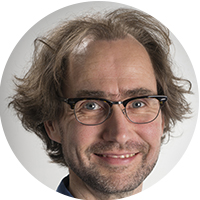 |
Manfred Kayser, Professor Dr. CV and List of publications |
 |
Fan Liu, Dr. |
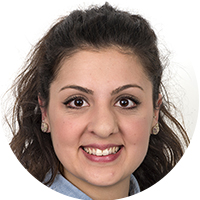 |
Athina Vidaki, Dr.
|
| Diego Montiel, MSc Scientific Researcher (bioinformatics) |
Germaine Liebrechts-Akkerman, MD Epidemiology and molecular biology of sudden infant death MD/PhD Student |
| Mannis van Oven, MSc Human population genetics and bio-geographic ancestry PhD Student |
Kaiyin Zhong, MSc Compound heterozygosity: methods and applications PhD Student |
| Markus de Jong, MSc Bioimaging and computer vision for facial landmarking PhD Student |
Silvana Maas, BSc Epigenetics of human lifestyle factors PhD Student |
| Celia Diez López, MSc Human microbiome and other exogenous DNA PhD Student |
Arwin Ralf, BSc Genomics of short tandem repeat polymorphisms PhD Student and Research Technician |
| Gabriela Dankova, MSc Functional genetics of human appearance traits PhD Student |
Irma Karabegovic, MSc Epigenetics of human lifestyle factors DSc student |
| Ben Planterose Jimenez, MSc Hypervariability of the human (epi)genome PhD Student |
Paraskevi (Vivian) Kalamara Research Technician |
Former staff members with active collaboration (formal guest status):
Dr. Karolina Lech
Dr. Lakshmi Chaitanya
Dr. Dmitry Zubakov
Dr. Mijke Visser (now Postdoc at Dept. of Dermatology, Leiden University Medical Center, NL)
Dr. Robert-Jan Palstra (now Senior Scientist at Dept. of Biochemistry, Erasmus MC, NL)
Dr. Oscar Lao Grueso (now Team Leader, Centro Nacional de Análisis Genómico de Barcelona, Spain)
Dr. Susan Walsh (now Assist.-Prof. at Dept. of Biology, Indiana University–Purdue University Indianapolis, U.S.A.)
Dr. Andreas Wollstein (now Postdoc at Dept. of Biology II, University of Munich LMU, Germany)
Dr. Katrin Ackermann (now Research Fellow at School of Chemistry, University of St Andrews, UK)
Other former staff members:
Nefeli Kousouri
Dr. Kaye Ballantyne (now Victoria Police Forensic Services Department, Australia)
Silke Brauer
Iris Kokmeijer
Dr. Fedde van der Lijn
Ying Choi
Mark Vermeulen
Kate van Duijn
Miriam Goedbloed
Dr. Johanna Maria (Hanneke) de Gruijter
Dr. Eline Hanekamp
Research Lines
Applying Human Epigenomic Variation
Functional Genetics of Human Appearance
Genetic Population Structure, History, and Ancestry
Genetics and DNA Prediction of Appearance
Molecular Investigation and Estimation of Time
Molecular Tissue Characterization and Identification
Y-chromosome DNA for male identification
Projects
The VISible Attributes Through GEnomics - VISAGE - Consortium aims to overcome the general limitation of current forensic DNA analysis by broadening forensic DNA evidence towards constructing composite sketches of unknown perpetrators from as many biological traces and sources and as fast as possible within current legal frameworks and ethical guidelines. The VISAGE Consortium consists of 13 partners from academic, police and justice institutions of 8 European countries, and brings together forensic genetic researchers and forensic DNA practitioners, statistical geneticists and social scientists to achieve the project aims. The VISAGE Project & Consortium receives funding from Horizon 2020 The EU Framework Programme for Research and Innovation, Secure Societies Challenge.
Publications
Resources

| ✅ |
IrisPlex and HIrisPlex Eye and Hair Colour DNA Phenotyping Webtool |
|
|
|
| ✅ |
Dataset from Lao et al.
|
|
|
|
| ✅ |
GAGA: A New Algorithm for Genomic Inference of Geographic Ancestry Reveals Fine Level Population Substructure in Europeans |
| ✅ |
Clean_tree: a software for high-resolution male lineage classification. |
| ✅ |
Clean_tree v2. |
| ✅ |
Yleaf: software for human Y-chromosomal haplogroup inference from next generation sequencing data. |
| ✅ |
TissueID: Novel taxonomy-independent deep learning microbiome approach allows for accurate classification of different forensically relevant human epithelial materials. |
Collaborations
Main internal collaborators Erasmus MC:
Professor Tamar Nijsten, Head Department of Dermatology, Erasmus MC
Professor Arfan Ikram, Head Department of Epidemiology, Erasmus MC
Professor Andre Uitterlinden, Head Human Genomics Facility Department of Internal Medicine, Erasmus MC
Professor Eppo Wolvius, Head Department of Oral & Maxillofacial Surgery, Special Dental Care and Orthodontics, Erasmus MC
Professor Robert Hofstra, Head Department of Clinical Genetics, Erasmus MC
Professor Joost Gribnau, Head Department of Developmental Biology, Erasmus MC
Professor Steven Kushner, Group Leader Neurobiology, Department of Psychiatry and Department of Neuroscience, Erasmus MC
Assist.-Professor Mohsen Ghanbari, Group Leader Molecular & Systems Epidemiology, Erasmus MC
Dr. Robert-Jan Palstra, Department of Biochemistry, Erasmus MC
Dr. Eskeww Mulugeta, Department of Cell Biology, Erasmus MC
Main external collaborators national:
Professor Peter de Knijff, Head Forensic Laboratory for DNA Research, Department of Human Genetics, Leiden University Medical Center, Leiden
Dr. Titia Sijen, Head Research and Development Department of Human Biological Traces, Netherlands Forensic Institute, Den Haag
Dr. Thomas Parsons, Director Science and Technology, International Commission on Missing Persons, Den Haag
Main external collaborators international:
Professor Timothy Spector, Head Department of Twin Research & Genetic Epidemiology, King’s College London, UK
Professor Nicholas Martin, Head Genetic Epidemiology, Queensland Institute of Medical Research, Australia
Professor Debra Skene, Head Chronobiology, University of Surrey, UK
Professor Wojciech Branicki, Head Human Genome Variation Malopolska Center of Biotechnology, Jagiellonian University Krakow, Poland
Professor Mark Stoneking, Group Leader Molecular Anthropology Department of Evolutionary Genetics, Max Planck Institute for Evolutionary Anthropology Leipzig, Germany
Assist.-Professor Susan Walsh, Group Leader Forensic Biology Department of Biology, Indiana University Purdue University Indianapolis, USA
Dr. Sijia Wang, Group Leader Dermatogenomics Max-Planck-Chinese Academy of Science Institute for Computational Biology, Shanghai, China
All Partners in the VISAGE Project (see VISAGE Project for details)

